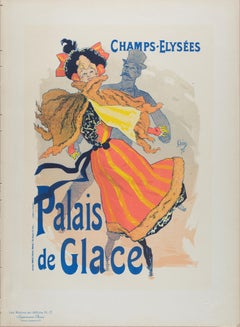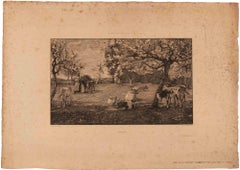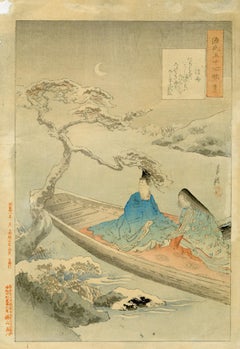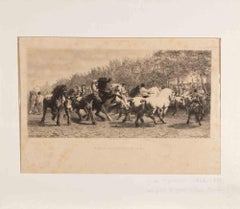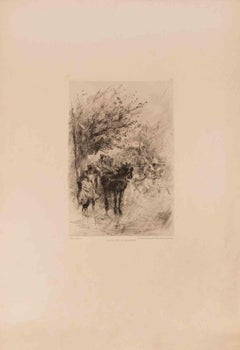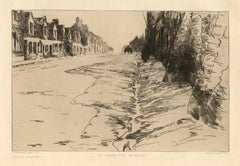Late 19th Century Landscape Prints
Art Nouveau Late 19th Century Landscape Prints
Lithograph
Modern Late 19th Century Landscape Prints
Etching
Edo Late 19th Century Landscape Prints
Watercolor, Handmade Paper, Woodcut
Modern Late 19th Century Landscape Prints
Etching
Modern Late 19th Century Landscape Prints
Etching
Late 19th Century Landscape Prints
Etching
Modern Late 19th Century Landscape Prints
Etching
Modern Late 19th Century Landscape Prints
Etching
Post-Impressionist Late 19th Century Landscape Prints
Oil
Edo Late 19th Century Landscape Prints
Watercolor, Handmade Paper, Woodcut
Victorian Late 19th Century Landscape Prints
Handmade Paper, Laid Paper, Drypoint, Etching
Modern Late 19th Century Landscape Prints
Etching
Naturalistic Late 19th Century Landscape Prints
Etching
Late 19th Century Landscape Prints
Etching
Other Art Style Late 19th Century Landscape Prints
Lithograph
French School Late 19th Century Landscape Prints
Laid Paper, Engraving, Aquatint
Late 19th Century Landscape Prints
Etching
Modern Late 19th Century Landscape Prints
Etching
Art Nouveau Late 19th Century Landscape Prints
Lithograph
American Realist Late 19th Century Landscape Prints
Monotype
Realist Late 19th Century Landscape Prints
Etching
French School Late 19th Century Landscape Prints
Handmade Paper, Engraving, Photogravure
The Master Smith. 1895. Lithograph. Way 84; Levy 123; Tedeschi, Stratis and Spink 120.i/ii. 4 1/2 x 5 1/2 (sheet 76 x 5 3/8). Only 15 lifetime impressions (in 2 states) were listed by Way; Goulding printed 38 impressions on 14 December 1903. The stone was erased in 1903. Printed on cream wove proofing paper. Monogrammed with the butterfly in the stone. A fine impression of this extremely rare lithograph.
Tedeschi, Stratis, and Spink write, page 366: As originally transferred to stone, the image includes trial marks made with a pointed crayon to the left of the sitter's shoulder. There is also a smudge at lower right below the image and a small stry mark upper right. Only one impression of this state has been located. Now in the Britigh Museum, London, it once belonged to Thomas Way and is illustrated in the Levy (1975) catalogue.' The impression illustrated above lacks the stray mark on the right, as the sheet is too small to accommodate it.
Tedeschi, Stratis and Spink write, page 366: 'This portrait of George Govier, was drawn ad the master smith conversed with the artist during a break from his work. Govier was born in Lyme Regis...
Impressionist Late 19th Century Landscape Prints
Lithograph
Naturalistic Late 19th Century Landscape Prints
Lithograph
Modern Late 19th Century Landscape Prints
Lithograph
Modern Late 19th Century Landscape Prints
Etching
French School Late 19th Century Landscape Prints
Handmade Paper, Woodcut
Academic Late 19th Century Landscape Prints
Etching
French School Late 19th Century Landscape Prints
Laid Paper, Etching, Drypoint
Victorian Late 19th Century Landscape Prints
Lithograph
French School Late 19th Century Landscape Prints
Handmade Paper, Etching
Late 19th Century Landscape Prints
Lithograph
French School Late 19th Century Landscape Prints
Ink, Rice Paper, Woodcut
Victorian Late 19th Century Landscape Prints
Lithograph
Late 19th Century Landscape Prints
Etching
Realist Late 19th Century Landscape Prints
Etching
Romantic Late 19th Century Landscape Prints
Lithograph
Realist Late 19th Century Landscape Prints
Laid Paper, Etching, Aquatint
Victorian Late 19th Century Landscape Prints
Lithograph
Realist Late 19th Century Landscape Prints
Paper
Art Nouveau Late 19th Century Landscape Prints
Lithograph
Late 19th Century Landscape Prints
Etching
French School Late 19th Century Landscape Prints
Laid Paper, Etching, Aquatint
Victorian Late 19th Century Landscape Prints
Laid Paper, Etching
Art Nouveau Late 19th Century Landscape Prints
Lithograph
Romantic Late 19th Century Landscape Prints
Lithograph
Naturalistic Late 19th Century Landscape Prints
Photogravure
Late 19th Century Landscape Prints
Etching
Post-Impressionist Late 19th Century Landscape Prints
Drypoint, Etching
French School Late 19th Century Landscape Prints
Handmade Paper, Engraving
Art Nouveau Late 19th Century Landscape Prints
Lithograph
Late 19th Century Landscape Prints
Woodcut
American Modern Late 19th Century Landscape Prints
Lithograph
Victorian Late 19th Century Landscape Prints
Lithograph
Symbolist Late 19th Century Landscape Prints
Etching
Modern Late 19th Century Landscape Prints
Etching
Symbolist Late 19th Century Landscape Prints
Etching, Aquatint
French School Late 19th Century Landscape Prints
Lithograph, Laid Paper
Symbolist Late 19th Century Landscape Prints
Etching
Art Nouveau Late 19th Century Landscape Prints
Lithograph
